How to Label Photography Medium: A Comprehensive Guide






In the realm of photography exhibitions, the labels you select for your work can significantly influence how your audience perceives and engages with your art. A well - crafted label serves as more than just an identification tag; it's a powerful means of enhancing the viewing experience, offering context, and drawing attention to your photographs. This guide will explore every aspect of labeling photography mediums, from understanding their importance to choosing the right materials and crafting engaging content. Additionally, we'll introduce you to high - quality labeling solutions provided by YG Group, a leading global provider of adhesive labels.
Why Labeling Matters
Labels play a crucial role in exhibitions, benefiting both viewers and photographers.
For the Viewer
Labels offer essential context. When a viewer approaches a photograph, details such as the artist's name, the title of the work, the date it was taken, and the medium used enable them to understand the piece on a deeper level. For instance, knowledge of the date can provide insights into the photographer's stylistic evolution over time or the historical backdrop against which the photo was captured. Moreover, well - written labels can pique the viewer's curiosity. An interesting anecdote about the photo - taking process or the inspiration behind it can draw the viewer in and encourage more in - depth engagement with the artwork.
For the Photographer
Labels are a medium through which photographers can convey their vision. They can share the creative process, the concept behind the image, and any unique techniques employed. This not only helps the viewer appreciate the work more but also adds a personal touch. Additionally, proper labeling imparts a sense of professionalism to the exhibition, enhancing the overall credibility of the display.
Key Decisions for Labeling Photography Medium
When it comes to labeling photographs, you have two primary options: acrylic sign holders & printed labels.
Acrylic Sign Holders
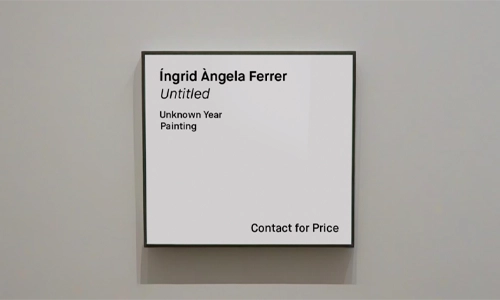
Acrylic Sign Holders
Acrylic sign holders exude an elegant and modern aesthetic, making them perfect for contemporary exhibitions. Their transparency allows the photograph to take center stage while still presenting the necessary label information. They are also quite durable, lasting longer than some alternatives. However, they do have drawbacks. Depending on the lighting, acrylic can create glare, which may make the label difficult to read and even affect the print's appearance. Moreover, the sterile look of acrylic might not suit all photography styles, particularly those with a more organic or traditional feel.
Printed Labels
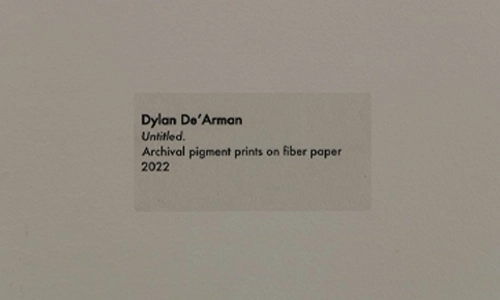
Printed labels are a favored choice for several reasons. They offer extensive customization in terms of shape, size, and design elements, enabling you to tailor them to the specific theme of your exhibition. Printed labels are cost - effective, especially when ordered in large quantities. They pair well with traditional photograph styles and, when printed on high - quality, archival materials, can have a long lifespan. However, compared to acrylic, they may lack that sleek, modern look.
Tips for Choosing Between Methods
● Size Requirements - Printed labels offer greater flexibility if you need oversized labels. You can easily adjust the size to meet your needs without incurring excessive costs.
● Glare Assessment - If your exhibition space has spotlights or bright lighting, exercise caution with acrylic labels. They may cause reflections that are distracting. Printed labels are less prone to this issue.
● Cost - Benefit Analysis - Printed labels become more economical as the quantity increases. If you're labeling a large number of photographs for an exhibition, printed labels can help you save money.
● Aesthetic Match - Consider the style of your photographs. Printed labels may complement traditional - style photos better, while acrylic might be a better fit for modern or minimalist photography.
● Ease of Change - If you anticipate making last - minute changes to your label content, printed labels are the ideal choice. It's much simpler to reprint a label than to modify an acrylic one.
Crafting Optimal Label Content
The content of your label is of utmost importance. It should convey relevant information clearly and concisely.
1. Include Key Details
● Artist's Full Name - Essential for crediting the photographer and helping viewers identify the creator.
● Title of Photograph - Conveys the artist's intended message or theme for the piece.
● Date of Image - Provides context, whether it's a seasonal photo, a representation of a particular era, or a documentation of a specific event.
● Dimensions - Allows viewers to visualize the scale of the work, which is crucial for understanding the composition.
● Photographic Process Used - Offers insights into the technical aspects of how the photo was created, enhancing the viewer's appreciation.
● Edition Number (if applicable) - For limited - edition prints, the edition number adds value and exclusivity.
2. Omit Non - Essential Data
Avoid cluttering your labels with information that isn't directly relevant to the photograph. Details like the photographer's birthplace or general musings on inspiration can be omitted. Keep the focus on the key facts about the image.
3. Mind Character Counts
Use clear and concise language. Steer clear of jargon and complex art - theory terms that might confuse the viewer. Craft short, to - the - point sentences that are easy to comprehend at a glance.
4. Seek Consistent Structure
Maintaining a consistent structure across all your labels is vital for a cohesive look. A common order could be Artist Name > Title > Date > Medium > Dimensions. This makes it easier for viewers to quickly locate the information they're seeking.
5. Size Matters
● Font Size - A font size of 20 - point or higher is recommended for easy readability from a reasonable distance. This ensures that viewers don't have to strain their eyes to read the label.
● White Space - Adequate white space around the text aids in visual separation. It makes the label look less crowded and more appealing.
● Line Length - Keep lines short. Long lines can be challenging to read, especially from a distance.
Creating Physical Labels with Word
If you've decided to use printed self - adhesive labels for your photography exhibition, using Microsoft Word can be a convenient option. First, you need to select the right type of self - adhesive label paper. Make sure it's acid - free to prevent yellowing over time, which is crucial for the longevity of your labels.

Mailings > Labels
Once you have the paper, open Microsoft Word. Go to the "Mailings" tab, where you'll find the "Labels" option.
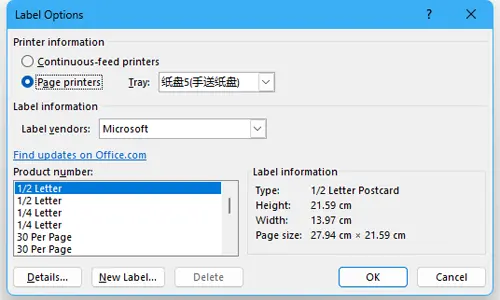
Label Size Specifications
Click on it, and a dialog box will appear. Here, you can specify the label size and layout according to the type of label paper you're using. Most label papers come with a guide indicating the compatible Word settings.
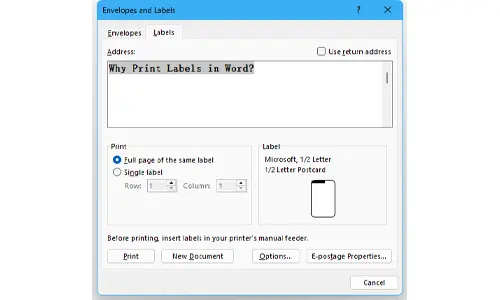
Enter The Label Content
Next, start entering the label content. Remember to follow the best practices for label content we discussed earlier, such as including key details and using a clear, concise font. You can customize the font size, style, and color to match the overall aesthetic of your exhibition. Use a clean font like Arial for maximum legibility.
After entering all the necessary information, preview the labels to ensure everything looks correct. Check for any alignment issues or overlapping text. Once you're satisfied, load the self - adhesive label paper into your printer according to the printer's instructions. Make sure to place it correctly to avoid misprints. Then, simply click "Print" to create your professional - looking self - adhesive labels.
Affixing Physical Labels
When attaching labels, take care to avoid damaging the photograph or the label itself.
General Precautions
● Gently press at the edges when positioning the label to avoid creating bubbles or wrinkles.
● Choose archival tape or adhesives to prevent any damage to the photograph or frame.
● Whenever possible, attach the label to the framing rather than directly on the print.
Handling Different Materials
If you're using heavier materials like wood or acrylic frames, you may need stronger attachment methods. Strong double - sided tape, small screws into the frame backing, or Velcro for easy detachment can be effective solutions.
Protecting Physical Labels
To ensure the longevity of your labels, proper storage and handling are essential.
Storage
● Keep prints and labels out of direct sunlight to prevent fading. Sunlight can possibly slowly damage both the label and the photograph.
● Store in cool, dry conditions with proper ventilation. This helps prevent moisture - related issues like mold or warping.
Cleaning & Handling
● Only clean labels when necessary, and use archival cleaning methods to avoid any damage.
● Handle labels carefully to prevent tears, scratches, or dents.
Generating Digital Labels (Optional Mention)
While physical labels are a popular choice, digital labels also have their place. You can use label design software, QR code generators, and digital displays like tablets, TVs, or projectors to create interactive multimedia labels. Digital labels are easy to update, allowing you to change the content without having to reprint. However, they do require a technical setup and may not be suitable for all exhibition spaces.
Best Practices for Label Design
A well - designed label can enhance the overall exhibition experience.
Readability
● Choose clean, simple fonts at a readable size.
● Use high - contrast colors to make the text easy to scan.
● Avoid long paragraphs or small text that might be difficult to read.
Consistency
● Maintain a cohesive visual style throughout all labels.
● Organize label content in a consistent order.
Branding
If applicable, align with the exhibition's branding. Incorporate relevant logos, fonts, and colors to create a unified look.
White Space
Allow breathing room around the text with margins. This reduces visual clutter and helps highlight the photography.
YG Group's Labeling Photography Medium Solutions
When it comes to finding the perfect labels for your photography exhibitions or any other labeling needs, YG Group is a reliable partner. With production bases in Malaysia and Vietnam, YG Group has the global reach to supply labels worldwide. As a leading manufacturer and supplier of adhesive labels, especially self - adhesive thermal paper labels, YG Group offers a range of high - quality products.
Top Thermal Paper Self - Adhesive Labels
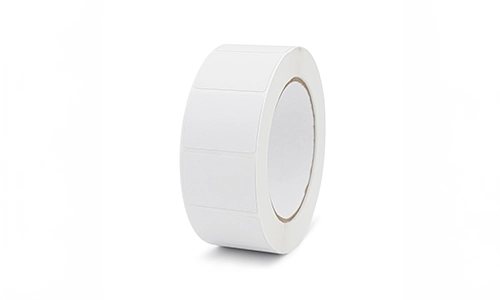
These labels are an excellent choice for photography exhibitions and various industries. They are waterproof, oil - resistant, and scratch - resistant, making them suitable for different environments, whether it's a humid exhibition hall or a storage area. Their durability ensures long - term use, and they are ideal for logistics, catering, retail, and manufacturing industries. They can also be a great option for labeling photography as they can withstand the handling and environmental factors associated with exhibitions.
Economic Top Thermal Paper Self - Adhesive Labels
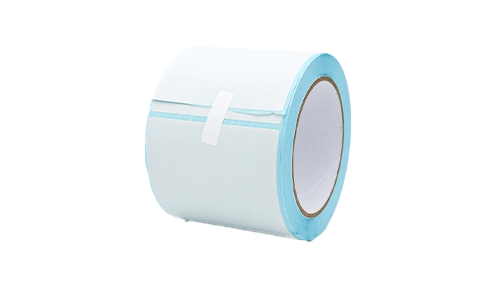
Economic Top Thermal Paper Label Roll
If you're seeking a cost - effective solution without sacrificing quality, these labels are a great option. They offer basic waterproof properties, making them suitable for many applications. Their high cost - effectiveness is a significant advantage, especially if you're labeling a large number of photographs for an exhibition. They are also suitable for a wide range of industries, including logistics, catering, retail, and manufacturing.
Economic Thermal Paper Self - Adhesive Labels
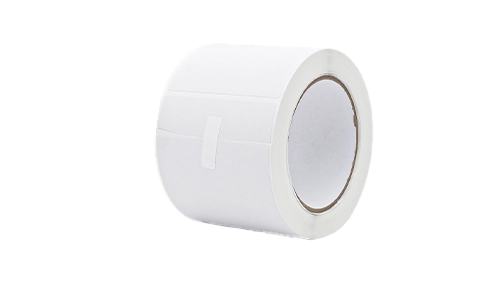
Economic Thermal Paper Label Roll
These labels have short - term waterproof characteristics, making them suitable for many uses. Their eco - friendly nature means you can use them with a clear conscience. They are also versatile and can be used in industries such as logistics, catering, retail, and manufacturing.
All of YG Group's labels are fully customizable. Whether you need a specific size, shape, or design to match your exhibition theme, YG Group can work with you to create the perfect labels. And with our wholesale factory prices, you can obtain high - quality labels at an affordable cost.
If you're interested in learning more about YG Group's labeling solutions or would like to place an order, you can contact them at gmoffice1@ygtape.com. Our team of experts is ready to assist you and help you find the best labeling solution for your needs.
Conclusion for Labeling Photography Medium
Properly labeling your photography is a crucial aspect of any exhibition. By following the tips and best practices outlined in this guide, you can create labels that not only provide essential information but also enhance the overall viewing experience. And when it comes to choosing the right labels, YG Group offers a range of high - quality, customizable options that are suitable for all your labeling needs. So, take the time to label your photographs correctly, and let your art shine through with the help of YG Group's labels.









_fbf1e.webp)
_1c68e.webp)
_176c9.webp)
_e5343.webp)
.webp)




